Information technology projects are among the most critical business decisions your company will make. However, these decisions cannot be made overnight. There is a lot of planning and analysis required in order to ensure long-term success.
The planning process might seem time-consuming, but it is vital. By leveraging the IT strategy services offered by your managed services provider, you can develop an IT strategy framework that properly addresses your technology needs while maintaining your budget.
In this article, we will take a closer look at how you can create an IT strategy framework that will align IT and business strategy to propel your company forward.
What is an IT Strategy Framework?
An IT strategy framework is a detailed methodology that helps businesses determine how IT projects and initiatives support their goals. It also takes the objectives of your company’s key stakeholders into account.
IT strategy frameworks act as a form of project management. Creating one usually starts early in the process of planning or roadmapping your IT objectives to determine your company’s immediate technology needs.
Before you begin working on your IT projects, you should meet with your team to ask the following questions:
- What exactly is our IT vision?
- What are our most significant IT needs?
- Which opportunities should be pursued in relation to our needs?
- What are the best ways to leverage our resources to create value?
The Importance of IT Planning
Prior to developing your framework, it’s important to sit down with your team and discuss IT planning. There are five key elements to the IT planning process:
- Determining and setting long-term IT objectives
- Examining internal factors that the framework should address
- Considering strategic options for handling and prioritizing the most significant IT issues
- Choosing among the available technology options
- Actively monitoring the results of the implemented technologies
Once you address these elements, you will essentially have the blueprint for your IT strategy framework.
The purpose of the framework is to ensure IT strategy alignment by assessing your technology strategy and needs prior to making any major decisions about IT spending.
Why You Need an IT Strategy Framework
There are several reasons why you might need to implement an IT strategy framework for your organization.
These reasons include:
- Your business does not already have an IT strategy
- You need to modify your objectives due to changing needs
- You are looking for ways to improve productivity across your organization
- You need to replace outdated equipment with newer technologies
- You are looking for ways to avoid risks with your IT
The Benefits of an IT Strategy Framework
The journey to reaching your business goals begins with a discussion about strategic objectives, goals, and projected outcomes for your information technology.
This can be done internally with your decision-makers or with the help of IT strategy consultants. These individuals are generally third-party representatives from an MSP who provide guidance for technology decisions by helping you create a strategic plan.
Here are some of the benefits of creating an IT strategy plan for business transformation.
1. Communicating Your Objectives
It’s one thing to arrive at a meeting ready to discuss your ambitious ideas, but it’s another to actually have the necessary details and data required to put your plan into action.
An IT strategy framework helps you outline key information for your project, which includes:
- What the purpose of the plan is
- When the plan will take effect
- Who will be affected
- Why this is a necessary business decision
- How your strategic plan will be implemented
- Where your business will be headed if the plan succeeds
2. Examining Project Interactions
As you develop your technology strategy framework, you will discover how it interacts with other projects you may already be working on. For example, you may find some good opportunities to create synergies with existing IT projects to take them to completion faster.
However, it’s also possible that the opposite may occur. With your new IT strategy framework, you may encounter instances where projects do not interact well with each other, and others that might be unnecessary.
Once you identify these potential issues, you can use your IT strategy plan to determine which projects should be prioritized, and which should be paused or canceled outright.

3. Improving Transparency
There is more to achieving IT strategy alignment than simply creating a new framework and following through with it. Your IT strategy framework can also help influence meaningful discussions with your stakeholders about the business itself.
After you have these discussions, your project management team can help your leadership team and the rest of your staff understand the importance of the projects to your IT strategy.
Positive, transparent discussions with your decision-makers not only move your IT projects forward, but can also be a huge morale boost for those directly involved with them because it shows that their work is valued and appreciated.
4. Learning Opportunities
After you get the approval of your company’s executive team, you can set the wheels in motion for your strategic plan to succeed. As you work through the plan, you’ll find opportunities to make informed technology improvements that help you attain your business objectives, such as developing a cloud migration project plan.
A common goal of many IT projects is looking for ways to mitigate risks. For example, if your business is running outdated hardware or software that has reached the end of their useful life cycles, you could be putting your organization at risk. Continuing to use this older equipment could lead to security or performance risks, especially if the manufacturer stops supporting it.
An effective IT strategy framework will present a plan for resolving this issue, including identifying the risks the old technologies pose and having a business continuity plan prepared well in advance.
Creating an IT Strategy Framework Template
An IT strategy framework is more than just a list of ideas and bullet points in a document. It’s a detailed strategic plan for your information technology that finds ways to align IT and business goals.
A technology strategy framework should generally begin with the following information:
- A mission statement: This explains the current state of your company or its purpose. This is different from the purpose of the IT projects you want to undertake
- A vision statement: This outlines your ambitions for your business and where you want to see it in the future
- A list of business goals: This sums up what you want to achieve for your organization and when, but not necessarily how they will be achieved
These three statements serve as the foundation for your IT strategy framework template.
You can use them to build out your strategic plan, which involves examining the following areas:
- Strategic objectives: How can technology be used to help reach your business goals?
- Your approach: What are the necessary steps towards attaining your goals?
- Measurement of progress: How will you take account of and report on progress?
- Project targets: Which improvements will you use to determine the success of your projects?
People are also a vital aspect of strategic planning templates. You need to ensure that your IT strategy framework and the projects it entails align with stakeholder objectives. The stakeholders in question consist of:
- Any co-workers or team members working on your projects
- The company at large
- The end-users or clients who depend on your business’s products or services
Need Help Creating an IT Strategy Framework for Your Business?Ensure IT strategy alignment with trustworthy advisory services from TAG’s experts. |
Avoiding Mistakes With IT Strategy Alignment
One mistake many businesses make when undertaking IT projects is a lack of planning or structure. Rather than taking the necessary time to find technologies that support their objectives, some companies will simply deploy new software or hardware and hope for the best.
While this seems like a quick solution, it can potentially do more harm than good. Making snap decisions without proper strategic alignment often results in unsuitable solutions being implemented and can potentially cost your business thousands of dollars in lost time, revenue, and productivity.
A technology strategy framework helps you mitigate these issues by breaking down your information technology goals, what is required to reach them, and how they will align with the objectives of your business and its key stakeholders.
Develop an IT Strategy Framework Backed By Expert Advice
A technology strategy framework lays the groundwork for successful IT projects. It helps you achieve IT strategy alignment by delivering a plan that clearly defines your objectives while aligning them with your company’s vision.
If you need assistance creating and implementing an IT strategy framework of your own, the experts at Technology Advisory Group are here to help. For over 25 years, our IT consultants and virtual CIOs have provided IT strategy services that led companies in Rhode Island and New England to success.
Get the advisory services you need to take your technology projects from conception to completion. Contact us today to book a meeting.
Schedule Your Cloud Services Consultation
Ready to make a move to the cloud? TAG is ready to help with any or all cloud services from a private cloud, public cloud, or Microsoft 365 services.
